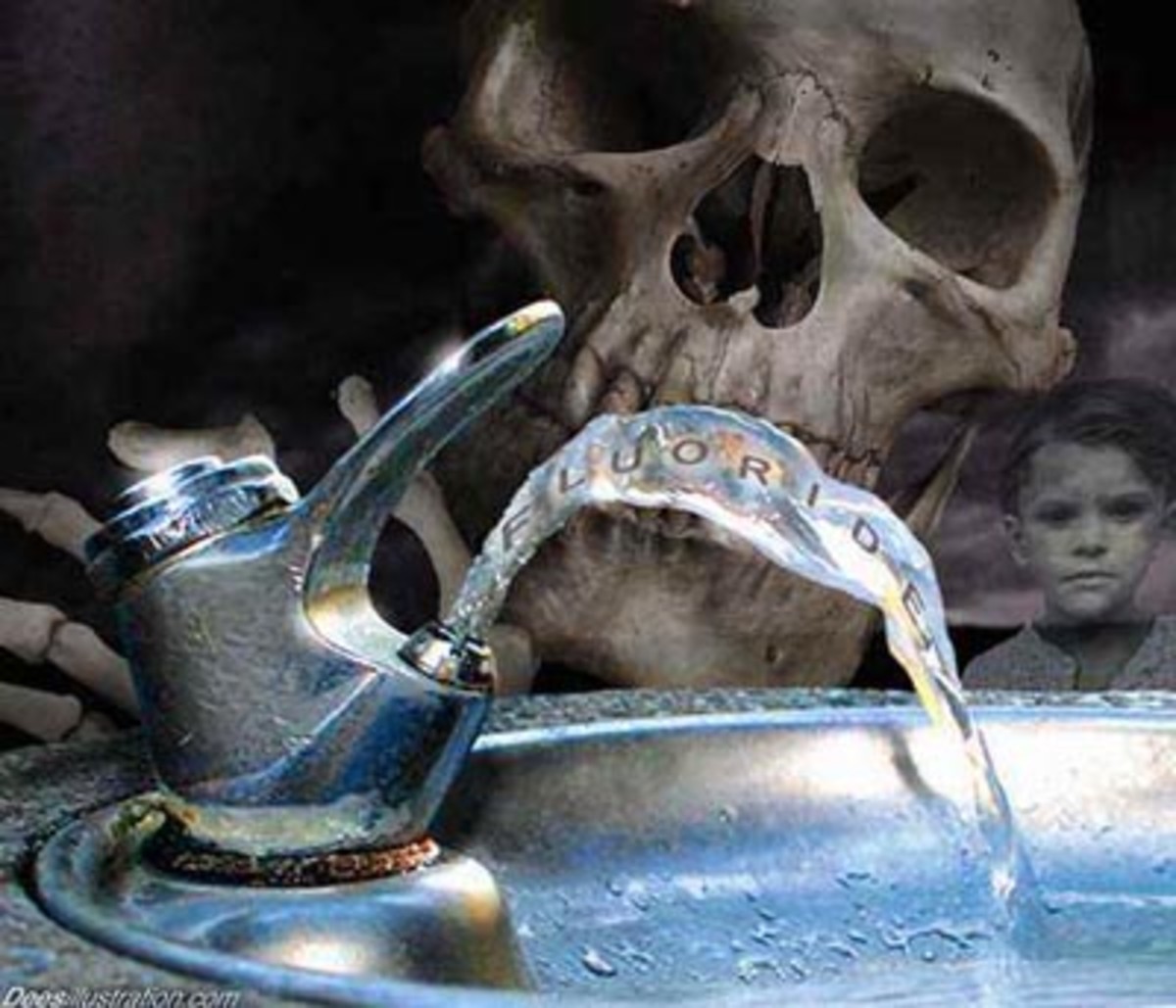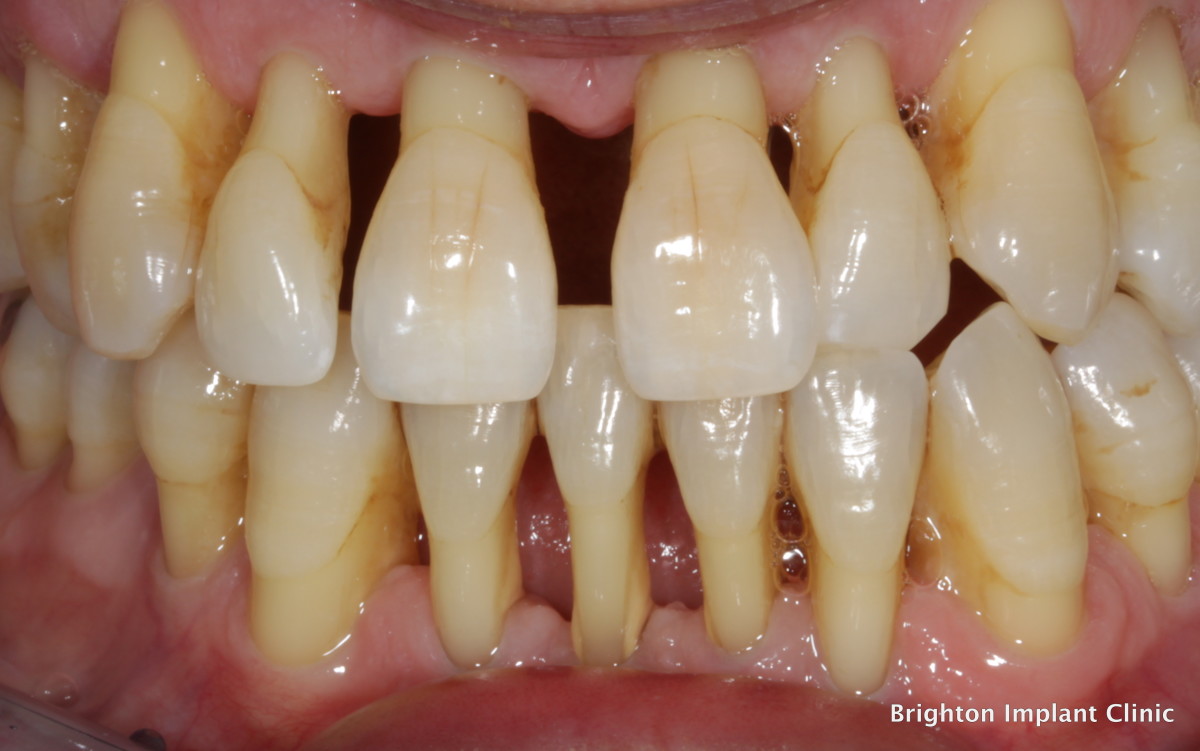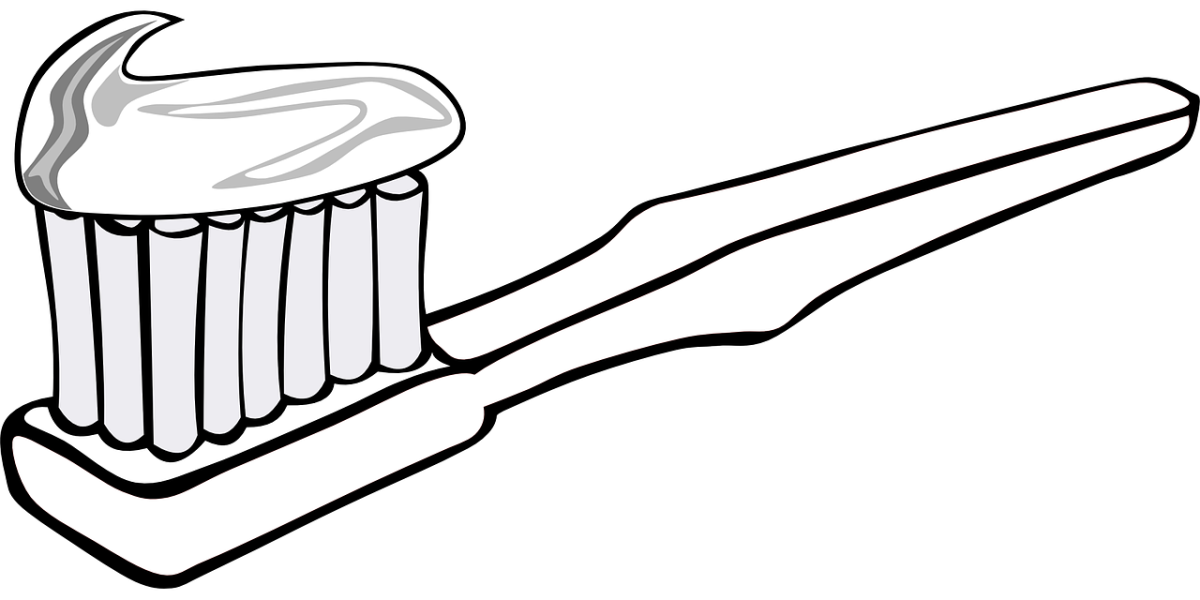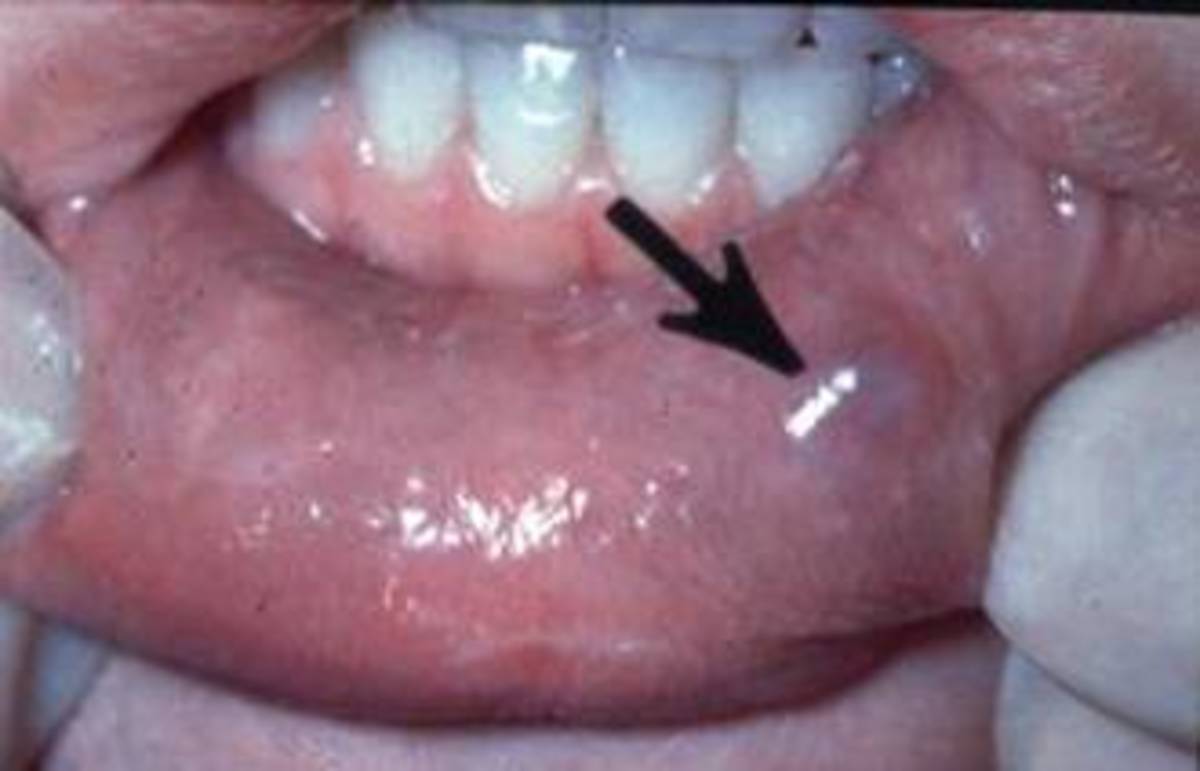How Toothpaste Works How Fluoride Protects Teeth
The Cause of Tooth Decay
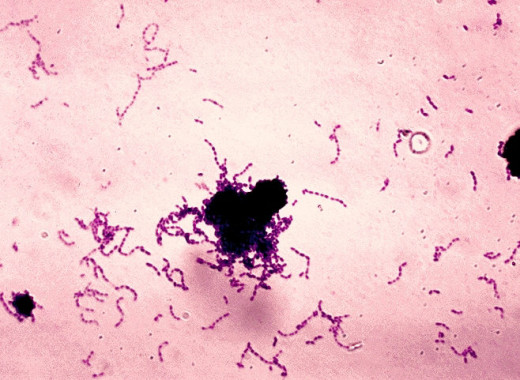
How Does Toothpaste Work?
How does fluoridated toothpaste prevent cavities? Can fluoride toothpaste damage your teeth? Toothpaste isn't just a simple minty creamy substance you squeeze from a tube. It is actually quite complex, and works in several different ways to protect your teeth.
First, toothpaste contains detergent. It works just like laundry soap or dishwashing detergent. It helps break apart the molecules
of food sticking to you teeth and allows them to be easily washed away when you rinse.
Second, toothpaste has grit. This is fine, abrasive material that scratches and scrapes at your teeth as you brush, breaking up the food particles and scrubbing the plaque off. The grit also scratches the outer layer of tooth enamel off, and can actually harm your teeth. It is actually possible to wear your teeth out by brushing too much!
Third, and most important, toothpaste contains fluoride, a chemical that bonds to your tooth enamel and strengthens it. Some research suggests that fluoride also acts directly on the bacteria, Streptococcus mutans that causes tooth decay, stopping it from growing.
Inside Your Mouth
First, lets look at what is actually going on in your mouth, and then we will discuss how fluoridated toothpaste works to counter cavities.
As mentioned above, a bacteria named Streptococcus mutans grows all over your teeth. There are a lot of other bacteria in there, but that is the main one that causes tooth decay. This bacteria is what is known as a facultative anaerobe. All this means is that it can grow in oxygen, and also grows when there is no oxygen. Why is this important? Because, when there is no oxygen, the bacteria changes the way it digests food, and it produces lactic acid. It is this acid that actually erodes your enamel.
So, as long as there is plenty of oxygen, your teeth are not going to be damaged much by bacterial acids. But, since there is oxygen in the air we breath, why isn't there oxygen where the bacteria are growing? Because, Streptococcus mutans grows in a plaque called a biofilm. This is actually made up of several different species of bacteria all growing together in a gooy, pasty mix of slime that they make to stick themselves to your teeth.
Think of it as really sticky bacterial snot. This snot is thick, and the bacteria on the inside layers of it are blocked away from the air. The oxygen all gets used up by the bacteria on the outside layers, so not much penetrates into the ones on the inside, next to your teeth. They turn into acid-spewing monsters, eating out your teeth!
Obviously, this is going to happen most deep in between your teeth, down under the gums, anywhere it is harder for the oxygen to get in, and easy for the bacteria to make sticky wads of biofilm where the toothbrush can't reach.
What Does Fluoride Do?
How does toothpaste, and fluoride, help stop all this?
First, tooth enamel is made up of a very hard chemical similar to bone, but even harder, called Hydroxyapatite. It is made of calcium and phosphorous, and is why your mom probably told you to drink milk, which has a lot of these minerals. But, there is a chemical even harder than hydroxyapatite, called...Fluorohydroxyapatite. Yep, fluoride binds chemically with your tooth enamel and makes them even harder.
So, you stick your toothbrush in your mouth and start brushing. The brush, the detergent and the grit all act to scrape and scratch the food bits off your teeth, and break up the bacterial biofilms on the surface. At the same time, fluoride is being rubbed all over your teeth, and small amounts are absorbed into the enamel, helping the teeth repair areas damaged by bacterial acids, turning plain old hydroxyapatite into fluorohydroxyapatite.
A little bit of the fluoride will work its way deeper, between the teeth and under the gums, so that helps a little. But this is where flossing comes in. When you floss you break up the biofilms of bacteria between the teeth and gums, clean out some of the rotting food in there, and allow fluoride to get into the crannies where many cavities occur. Floss!
Fluorite Crystals. Pretty, aren't they?
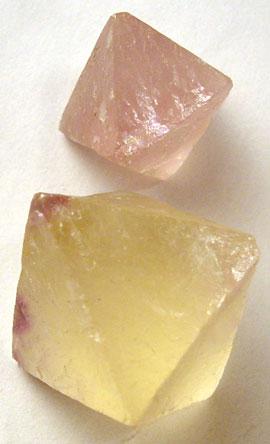
Make Fluoride Work!
What else can you do? How can you make fluoride really go to work on your teeth and get all the protection possible? Remember, the joining of fluoride with hydroxyapatite is a chemical reaction.
There are three things that control how much of a chemical reaction can occur, temperature, time, and concentration of the chemicals.
The hotter the chemicals are, the faster the reaction goes. Unfortunately, there isn't much we can do to increase the temperature inside our mouths. Don't worry about it.
Time and concentration we can control. Don't forget that brushing itself, with all those harsh abrasive gritty particles, erodes away the outside surface of your teeth. Don't just increase how many times a day you brush. At some point, you are doing more harm than good. What you need to do is increase how long the toothpaste is on your teeth.
Some easy hints. Put a dab of toothpaste in your mouth before you jump in the shower. Just swish it around in your mouth as you wash. Put a dab on after a snack, on break at work, anytime, hold it on there for a minute and then rinse. Do this several times during the day, in addition to your normal brushing.
When you are brushing, do a few other things at the same time. Stick your toothbrush in your mouth and then wash your hands, comb your hair, fix your makeup. Then finish brushing. It is easy to multitask and extend the time you have toothpaste on your teeth.
The last factor is concentration. Look at the ingredients list on your toothpaste tube. It tells you the fluoride concentration. Just compare before you buy your next tube. Buy the brand with a higher concentration. If you look around you can find concentrations as high as .4%, but that is rare. .3% is easier to find, and about as high as you usually see. Stannous fluoride is said to be the most effective type in cavity prevention.
Problems Caused By Fluoride
Any drawbacks? Yes. Fluoride can cause staining of your teeth. In younger kids it can cause permanent blotches. The ideas above are only for people who already have their permanent teeth, as excess fluoride can damage un-erupted, growing teeth.
You don't want to swallow too much fluoride. It is difficult, but possible to overdose on fluoride. Every now and then some little kid will eat a whole tube and get sick, and maybe even die! Keep little kids away from all bath and kitchen chemicals!!
Fluoride is a nutrient, a mineral you need very tiny amounts of to have good bone health. It helps bone density, and too little can lead to osteoporosis. But that tiny little amount you need is easily supplied just by drinking an occasional cup of tea, which has fluoride in it naturally. Most big city water is fluoridated, so few people actually need to add it as a nutrient. You get a little bit in the small amounts left in your mouth after brushing and rinsing. Any one of these sources is plenty. Don't swallow your toothpaste.
Excess Fluoride
Note the two pictures below. The top is an example of mild fluorosis. This person may have been exposed to a bit too much fluoride as a child, causing his teeth to appear dark, with white blotches. This is not harmful in itself, but most people would prefer whiter teeth. Take care not to allow growing children to swallow toothpaste or drink mouthwash. It can also be caused by over-enthusiastic dentists applying fluoride too often.
The second picture is far more severe. This person probably grew up in an area where fluoride is very high in the ground water. At this high level, fluoride can actually damage your bones, and cause painful arthritis-like symptoms. It is not something to worry about for most of us.
Mild Fluorosis
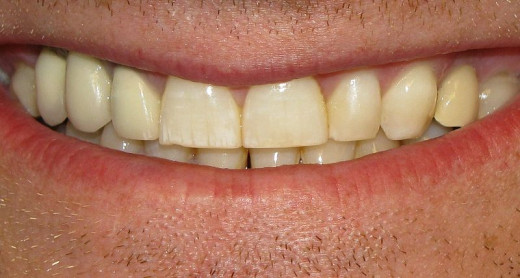
Severe Fluorosis
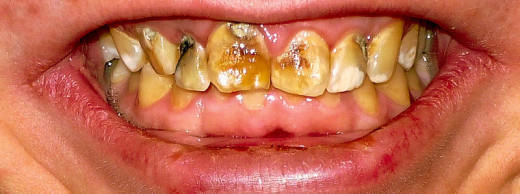
This link will take you to an article describing the effects of diet on teeth. I recommend it for its clarity and usefulness (I wrote it :-).

